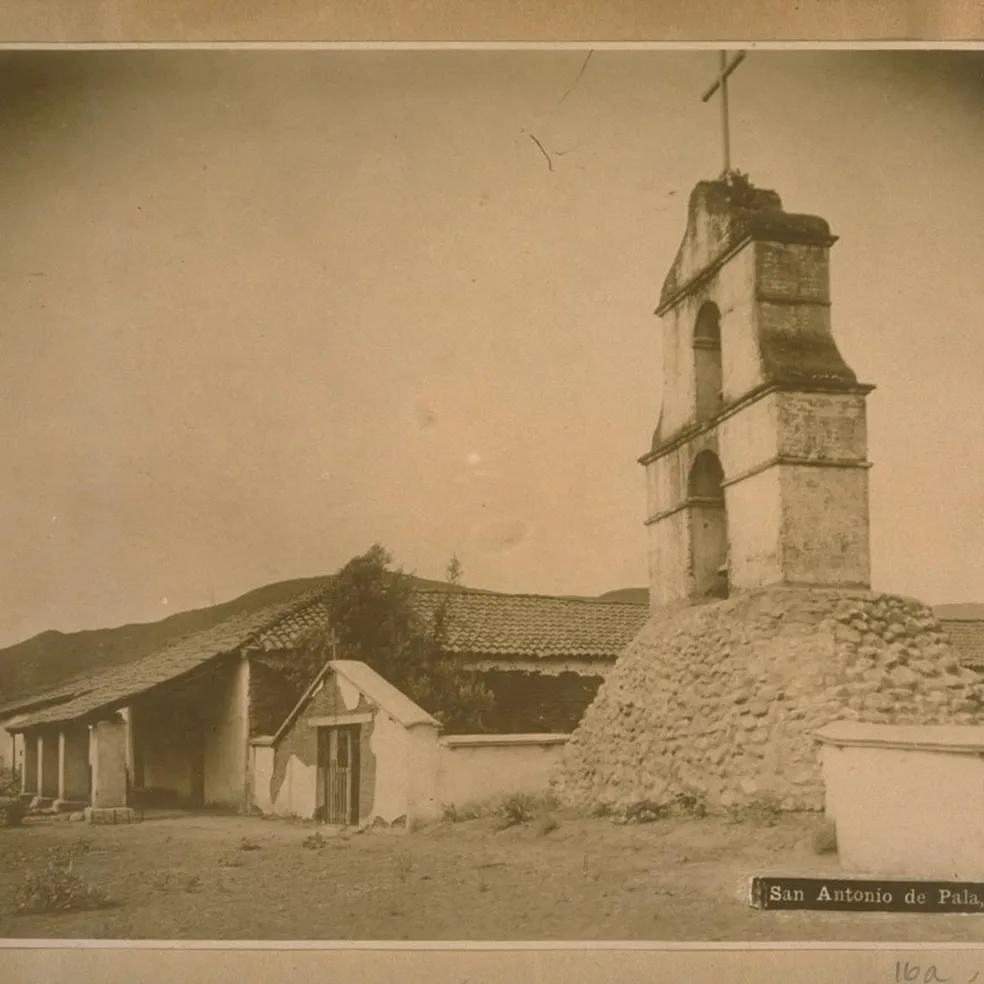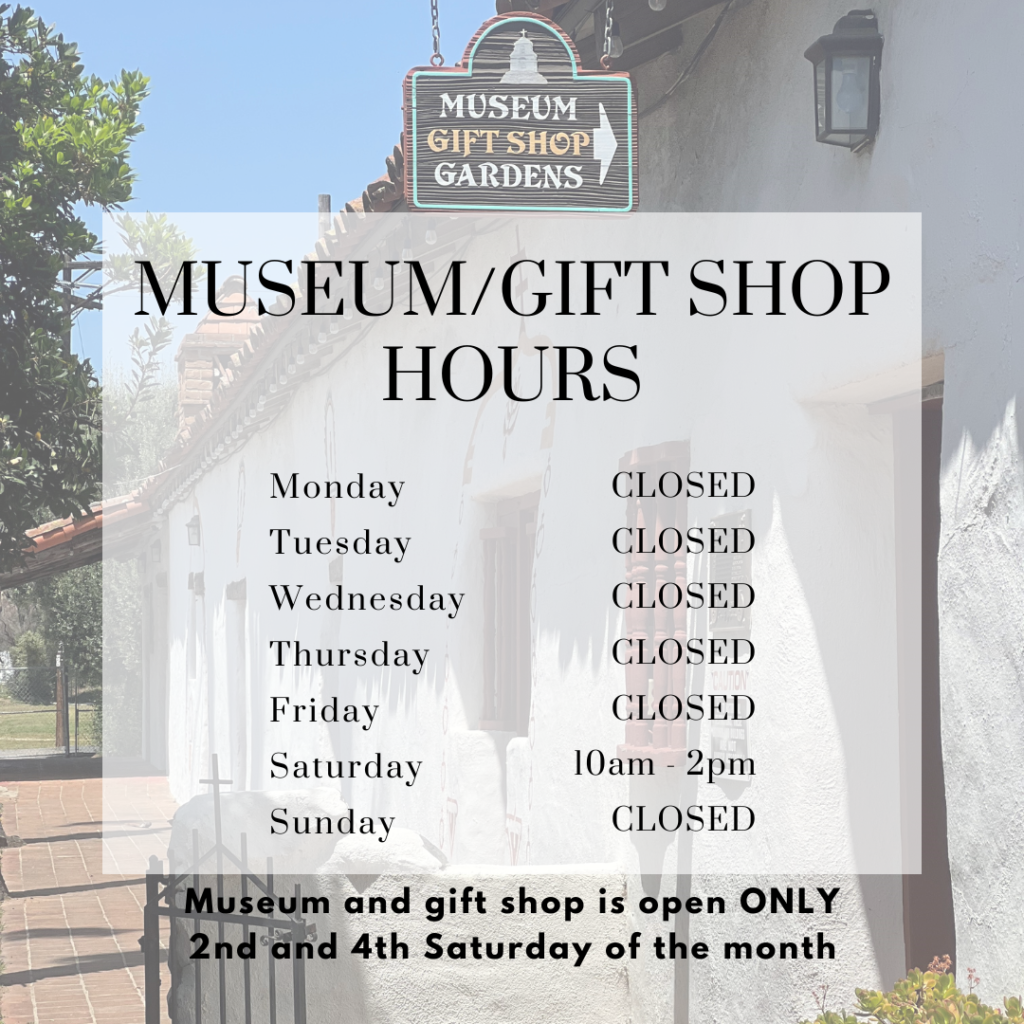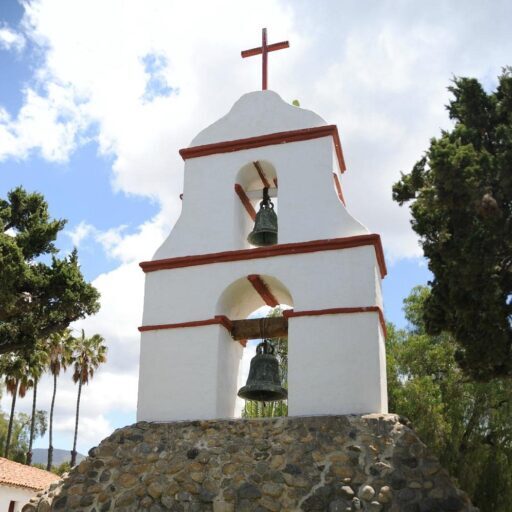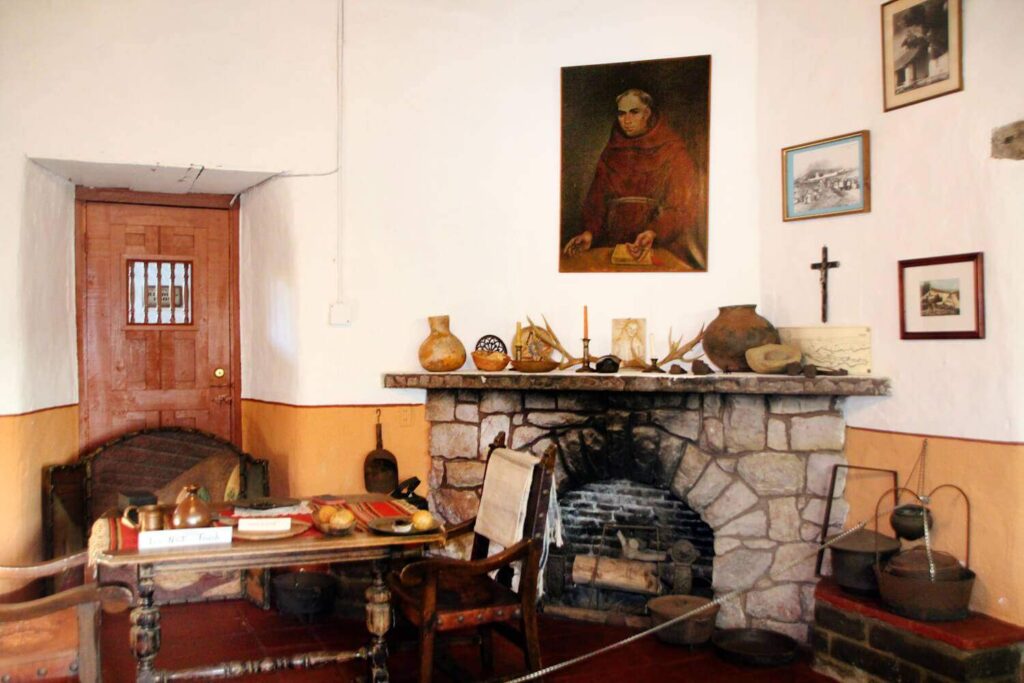
The San Antonio de Pala Asistencia, or the ‘Pala Mission,’ was founded on June 13, 1816 as an asistencia (‘sub-mission’) to Mission San Luis Rey de Francia, some twenty miles inland upstream from the mission on the San Luis Rey River. It was part of the Spanish missions, asistencias, and estancias system in Las Californias – Alta California. Today it is located in the Pala Indian Reservation located in northern San Diego County, with official name is now Mission San Antonio de Pala. It is the only historic mission facility still serving a Mission Indian tribe.
Points Of Interest
Chapel
The original simple structure is a fine example of Mission architecture. The long chapel displays Indian paintings on the walls, the original floor, and offers the visitor a prayerful and reflective atmosphere.
Crucifix
In the chapel, above the altar, is the hand carved crucifix of Bestardo wood from the State of Michoacan, Mexico. The hand carved figure of Jesus, is done in Oriental (Eastern) rather than Occidental (Western) style, with shortening of the body. This is the style of the 14th century Spanish. The crucifix early 17th century Mexican.
Bell Tower
This distinctive Bell Tower stands out from all the others in the 21 California Mission chain in that it stands apart from the main structure and has a cactus growing on the top, adjacent to the crowning cross. The tower is modeled after one in Juarez, Mexico and stands out into the California sky with lovely, graceful lines.
Gift Shop
Is housed in the original west wing of the Mission complex and has a rich display of Native Indian artifacts, old statutes, and other important relics of Pala Mission, as well as the entire Mission.
Old Cemetery
To the right of the chapel is the old Luiseno cemetery, in which hundreds of Native Americans were buried. On most of the graves there is an old wooden cross. Very few headstones were erected.
The Patio
The enclosed gardens and shrines have a strong appeal of peace and meditation. Native shrubs, plants, fruit trees and one of the oldest Pepper trees in California can be found here. Fr. Peyri planted it from seeds given to him in 1830 by a sailor from Peru.
The Grounds
Walking around, the visitors can see the ruins of the old jail, the aqueduct, and the olive grove planted by the first Friars and their Indian co-workers. Silent witness to the prosperity of a rich “rancho” and when it was home to thousands of Native Indians.


